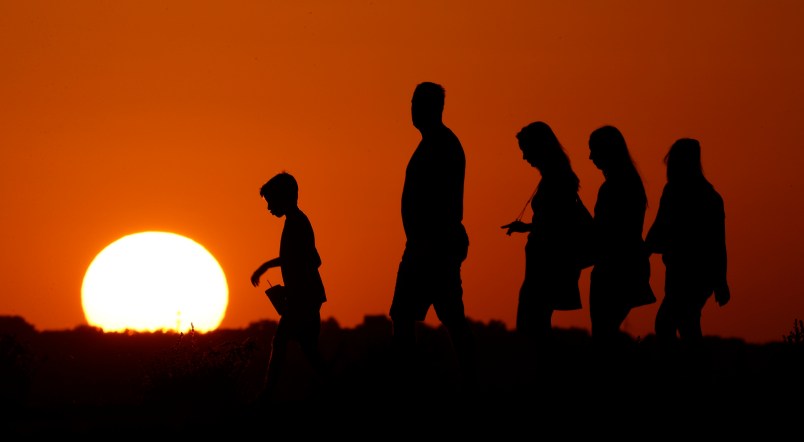I was raised by a man steeped in the life sciences. He wasn’t a climate scientist. He was a marine botanist who spent the first and last parts of his career teaching general biology at various colleges. But this professional description doesn’t capture the depth of the imprint on him and thus indirectly on me. For him it was an entire ethic and worldview, one rooted in evolutionary theory and furnished from various domains of knowledge: archeology, paleontology, paleo-zoology, ecology, astronomy in addition to biology.
With the current grim tide of news about the climate – some of which comes in studies and others more vibrantly with our own eyes in what we see before us – I’ve been coming back to one of the key insights I took from my childhood reared in this way of thinking about the world.
Life is incredibly resilient. Almost miraculously resilient. Life on earth has existed for many hundreds of millions of years. It has evolved and thrived with moving continents, rising and falling sea levels, dramatic changes not only in climate but the composition of the atmosphere itself. Why did animals used to be so much bigger? One big reason is the composition of the atmosphere.
This resilience and the endlessly unfolding diversity of life on Earth was a touchstone for him and a focus of what I can only call reverence of a sort.
But if you’re steeped in these dynamics of ecological systems and their resilience you know one basic fact. Life is incredibly resilient. Apex predators and top level consumers are not. And that’s what we are. The ultimate top level consumer, both bestriding and utterly dependent on the stability of the global ecosystem.
Top level consumers are at the top of the pyramids often used to illustrate ecological systems. But it’s a bit more like a game of Jenga. The player at the top gets the top billing. They’re also totally dependent on the myriad bit players down the chain. Whales need plankton. Plankton doesn’t need whales. There’s a bit more interdependence than that. But that’s the basic dynamic. We are highly, highly dependent on the precise chemistry of the oceans, the vagaries of climate and microfauna that allow us to grow food at a scale that will feed anything remotely like the current global human population. We need microfauna and soil microorganisms. They don’t need us.
We usually hear the price of climate change marked in rising sea levels. Rising sea levels will devastate low lying countries and entirely gobble up many islands. But the vast majority of the global landmass will remain above water and there’s lots of land to go around. The more existential threat are these seemingly subtle changes to the earth’s ecology that can make our whole system of feeding ourselves, having clean air to breath and a stable system of global pathogens just not work anymore.
Worried about life on earth? Don’t be. Life’s resilient and has a many hundreds of millions of years track record robust enough to handle and adapt to anything we throw at it. But the player at the top of the heap is the first to go.
Now, humans do have one key ace in the hole. We have a brain that allows a different form of adaptability. Long before any modern technology, with the most archaic of tools, humans managed to colonize the entire planet save for Antartica – from the most baked, parched desert sands to the permanent frozen regions.
They managed to keep operating even in the face of vast climatic changes, some of them quite abrupt. We can hope that the two to four decades will see us arrest the release of carbon into the atmosphere and then use our technological smarts to reverse the damage where possible and adapt to living in the altered environment. Let’s hope. We are but a thin film of life on the edges of a vast interplay of lifeforms, climate and geology that makes our existence possible. As a species we’re in real trouble.






